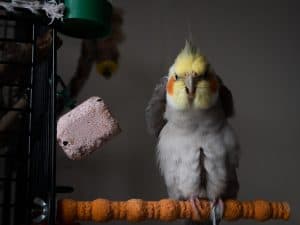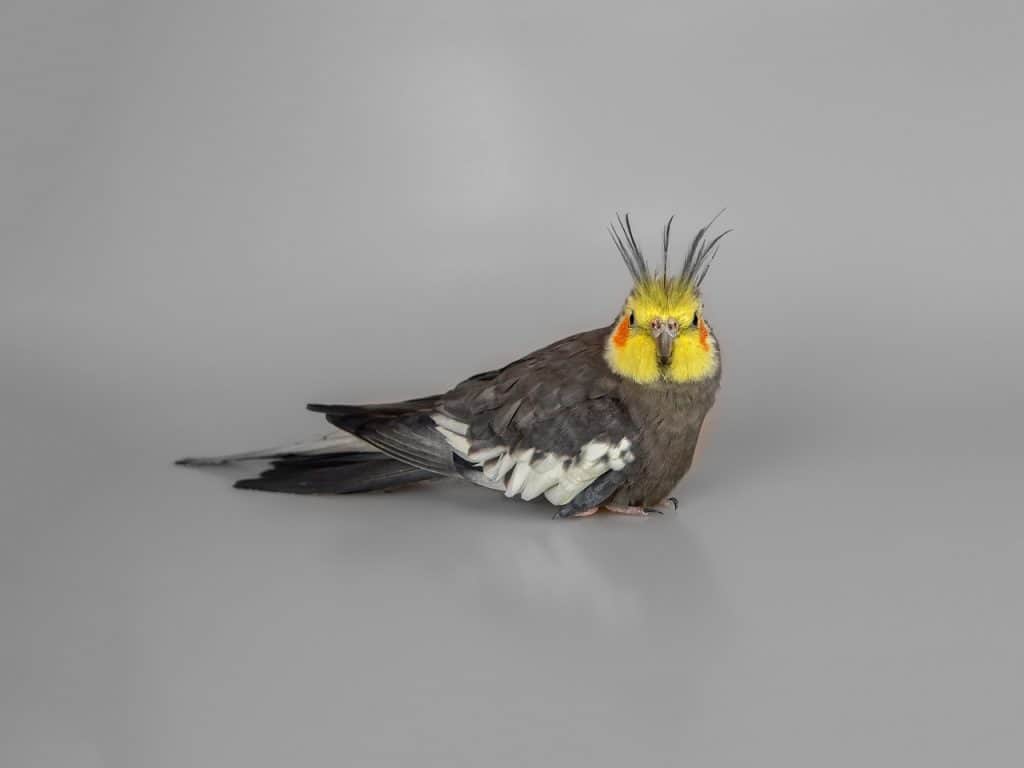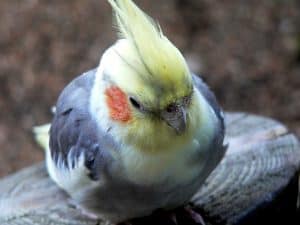Cockatiels are social, affectionate birds that make great pets. However, despite their friendly demeanor, it is important to understand where not to touch them in order to ensure their comfort and well-being. In this blog post, we will explore the sensitive areas of a cockatiel’s body and explain why it’s important to avoid touching these areas. By following these guidelines, you can build a strong, positive relationship with your cockatiel and keep them healthy and happy for years to come.
Why it’s important to know where not to touch a cockatiel?
Cockatiels have sensitive areas on their bodies that can easily be injured if touched. These areas are particularly prone to irritation, discomfort and even pain if mishandled. Knowing where these areas are will help you avoid causing your bird any unnecessary distress, as well as reduce the risk of injury or even death.
The Top 10 Places You Should Not Touch a Cockatiel

1. Head
Bird’s head is one of the most sensitive areas. You should avoid touching it at all costs, as even gentle petting can cause discomfort or pain. The same goes for the beak and eyes, as these areas can cause discomfort or even pain if mishandled.
2. Neck
The neck area is especially delicate and should be handled with extra care. Avoid squeezing the bird’s neck, as this could cause serious injury or even death.
3. Back
Cockatiels have sensitive spines that can easily become injured if touched too hard. Gently stroke your bird’s back rather than poking it in order to avoid hurting them. Avoid stroking a bird’s back or under its wings, as it may lead to the animal becoming sexually frustrated bird and start viewing you more romantically than friendlily.
4. Wings
The wings are delicate and can become easily injured if mishandled. Avoid pulling on the feathers or grabbing the bird’s wings, as this could cause serious distress to your pet bird.
5. Feet
Cockatiels have very sensitive feet with sharp claws designed for gripping branches and other objects in order to stay balanced. Avoid touching the claws, as this could cause your bird unnecessary discomfort and pain. Bird’s feet are also particularly delicate and should be handled gently.
6. Tail
The tail feathers are delicate and should be handled with extra care in order to avoid injury or distress to your cockatiel.
7. Vent:

The vent is a sensitive area of the bird’s body that should never be touched as it can cause serious harm to your pet. Most bird species have a specialised area around their anus known as the vent, which serves to allow the bird to expel urates and faeces.
8. Abdomen:
The abdomen area is also sensitive, so avoid touching this area at all costs in order to ensure the bird’s comfort and well-being.
9. Feathers
Cockatiels have delicate feathers that can be easily damaged or plucked if mishandled. Avoid touching their feathers unless it’s part of a preening or grooming activity.
10. Ears
Cockatiels have sensitive ears that can be easily damaged if touched too roughly. Handle your bird gently and avoid putting any pressure on this area in order to keep them safe and healthy.
How to pet your bird correctly? Tips on how to handle your bird safely and gently

Knowing how to handle the bird properly is key to ensuring their comfort and well-being. Here are some tips to help you:
1. Always use two hands when handling your bird to provide extra stability and prevent any sudden movements that could injure them.
2. Speak softly to your cockatiel, as loud noises can startle or frighten them.
3. Keep your hands away from their head, neck and feet as these are delicate areas prone to injury.
4. Try to avoid touching the feathers as this can cause plucking or damage to the bird’s delicate coat.
5. If you must touch a particularly sensitive area, like the vent or ears, always support the bird with one hand and use your other to gently stroke in a circular motion.
6. Gently scratch or massage the bird’s head and neck area as this can be calming for them.
7. If your bird is resistant to being handled, allow them to become accustomed to it gradually. Start by offering treats or rewards when they come close enough for you to touch them, then move on to gentle strokes and petting.
8. Always supervise small children when handling pet birds, as they may not always know how to handle them safely.
9. Keep your bird’s nails trimmed to help prevent any accidental scratching or injury while it is being handled.
10. Make sure the bird has a safe and comfortable place to perch during handling sessions and do not leave them unattended.
11. Always wash your hands before and after handling your bird to keep them healthy and safe.
12. If you are unsure of the best way to handle your pet, consult a professional for advice or guidance.
Learning the body language of your pet birds can help you understand how to handle them more safely and effectively. Pay attention to their behaviors and postures, as this can tell you a lot about what they are feeling. If your bird seems tense or uncomfortable, take note of the area that you were touching and avoid it in the future. Other birds may enjoy being handled more, so be sure to take the time to learn their individual personalities and preferences in order to keep them safe and happy.
Final Thoughts: Where Not To Touch a Cockatiel?
Many birds, including cockatiels, are extremely sensitive and can be easily injured when mishandled. To ensure your bird’s safety and comfort, avoid touching its head, neck, back, wings, feet, tail or vent areas. Additionally, try to keep your hands away from the feathers as this can cause plucking or damage to their delicate coat. Finally, pay close attention to your bird’s body language as this can help you understand how they are feeling and how best to handle them. With these tips in mind, you can ensure your cockatiel remains happy and healthy for many years.



